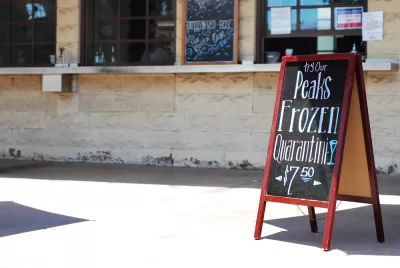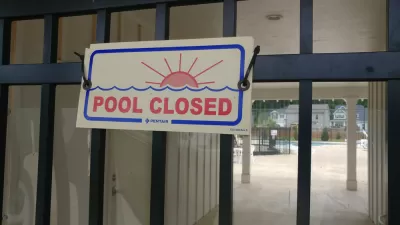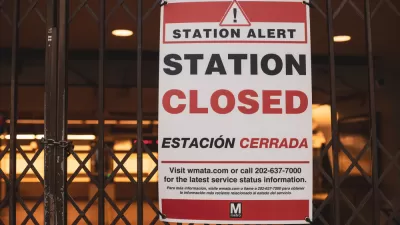In a frank assessment of the reopening choices confronting the nation's governors, Harvard's global health expert, Ashish Jha, asserts that the opening of bars and some other indoor businesses jeopardizes the opening of schools in the fall.

"If governors want schools to reopen in the fall, they have to contain the amount of coronavirus in their communities now, and that begins with pausing or rolling back reopening plans, Dr. Ashish Jha said Wednesday [July 1] on The Lead with Jake Tapper," reports Andrea Kane. [The video accompanies the source article].
“...and when they understand the choices in stark terms— schools this fall or bars now — those are your choices … I think more and more governors, even in places that aren't having large outbreaks, are realizing that maybe we can avoid bars in the summer and fall, if that gives us a better shot at getting schools open this fall,” Jha said, who is director of the Harvard Global Health Institute.
However, Jha didn't restrict his advice to just keeping the bars shuttered. As noted in a recent post on the hard-to-detect level of viral transmission that resulted from the protests that followed the death of George Floyd in the custody of the Minneapolis police on May 25, indoor congregate settings pose the most risk.
“You can’t have bars and gyms open. I’m not sure you have restaurants open. You've got to have mandatory mask-wearing and you've got to push on surveillance, testing, tracing — all the stuff we've been talking about,” he said.
“The single biggest determinant of whether we're going to be able to open schools and keep schools open is how much virus there is in the community,” Jha added.
In his appearance on the PBS NewsHour on June 29, Tom Frieden, former President Obama's director of the Centers for Disease Control and Prevention, said that he's seeing "a huge viral reservoir that's going to take months to deal with" that is not being recognized notwithstanding the record number of new daily infections.
On Thursday, 53,000 cases were reported in the U.S, the first time the number topped 50,000, and the sixth record in nine days. On June 29, in response to a question by Sen. Elizabeth Warren (D-Mass.) at a Senate committee hearing, Anthony Fauci, the nation's top infectious disease experts and a member of the federal COVID-19 response team, stated, "I would not be surprised if we go up to 100,000 a day if this does not turn around, and so I am very concerned."
Jha added, "So when I look at large parts of the country right now, and think if that's the level of virus we have going into September, we're not going be able to keep schools open. So, we've got to get aggressive by bringing the virus levels down and accept that kids will do a little bit of transmission and hopefully, very few of them will actually end up getting sick themselves.”
Frieden agreed with bar closure and mask mandate recommendations to reduce the viral levels.
"It's going to take a while," he told PBS's William Brangham in response to his question about what is causing the rapid increase in infections and what needs to be done.
It means a lot more distancing, masks, handwashing, distance, but it also means that bars need to be closed in these areas. You can't do that safely. We have had many outbreaks related to bars.
It means that indoor space, the more people together with the more crowding, less ventilation and the higher the rate of COVID in that area, the more chance for explosive spread.
The final word goes to Jha as he ended the CNN interview on a cautiously optimistic note.
“Do all of that throughout the summer, I think there's a pretty good chance most states can bring their outbreaks to much, much lower levels, and then open up school safely.”
Related in Planetizen:
- COVID's New Demographic [and new attention on bars as settings for high viral transmission], June 29, 2020
- [Bars and nightclubs close in Boise, Idaho], June 24, 2020
- Hoboken First U.S. City to Shut Down Restaurants and Bars and Issue Curfew, March 16, 2020

Trump Administration Could Effectively End Housing Voucher Program
Federal officials are eyeing major cuts to the Section 8 program that helps millions of low-income households pay rent.

Planetizen Federal Action Tracker
A weekly monitor of how Trump’s orders and actions are impacting planners and planning in America.

Ken Jennings Launches Transit Web Series
The Jeopardy champ wants you to ride public transit.

NYC Open Streets Organizers Call for City Support
The number of open streets projects has dropped year after year as volunteer groups struggle to fund and staff them.

Crime Continues to Drop on Philly, San Francisco Transit Systems
SEPTA and BART both saw significant declines in violent crime in the first quarter of 2025.

How South LA Green Spaces Power Community Health and Hope
Green spaces like South L.A. Wetlands Park are helping South Los Angeles residents promote healthy lifestyles, build community, and advocate for improvements that reflect local needs in historically underserved neighborhoods.
Urban Design for Planners 1: Software Tools
This six-course series explores essential urban design concepts using open source software and equips planners with the tools they need to participate fully in the urban design process.
Planning for Universal Design
Learn the tools for implementing Universal Design in planning regulations.
Heyer Gruel & Associates PA
Ada County Highway District
Institute for Housing and Urban Development Studies (IHS)
City of Grandview
Harvard GSD Executive Education
Toledo-Lucas County Plan Commissions
Salt Lake City
NYU Wagner Graduate School of Public Service





























